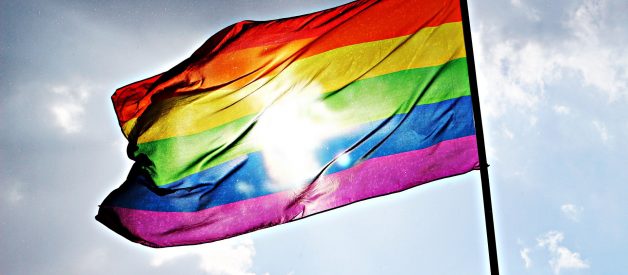Thinking critically about novel Pride flags
 Photo: rihaij | CC0 Public Domain license. Source: Pixabay.
Photo: rihaij | CC0 Public Domain license. Source: Pixabay.
The history and accomplishments of LGBTQ+ people are endlessly targeted for denial or erasure. Precious few of our contributions to history, society, and culture have survived the censors and homophobes. Even fewer are known and celebrated outside the LGBTQ+ community. One of those is the rainbow Pride flag, arguably our most recognizable contribution to world culture. Yet, the last few years have seen two well-publicized attempts to ?reboot? the rainbow Pride flag.
 Philadelphia?s ?More Color More Pride? flag created by Tierney. Source.
Philadelphia?s ?More Color More Pride? flag created by Tierney. Source.
In 2017, Philadelphia?s Office of LGBT Affairs unveiled a new design (created by the advertising agency Tierney) that added a black and brown stripe to the existing six stripes of the rainbow flag. After a campaign to address racism in Center City Philadelphia?s gay bars, the city promoted the ?More Color More Pride? flag as a way to include and ?highlight? People of Color in the city?s LGBTQ+ community ? a community that has had its share of problems with racism and marginalization.
Separately, Daniel Quasar?s 2018 ?reboot? of the rainbow Pride flag proposed moving the brown and black stripes (and adding stripes in colors from the transgender flag) to the hoist (or ?flagpole?) side of the flag to form a chevron pointing toward the fly end of the flag, to imply needed progress on racial, ethnic, and transgender issues.
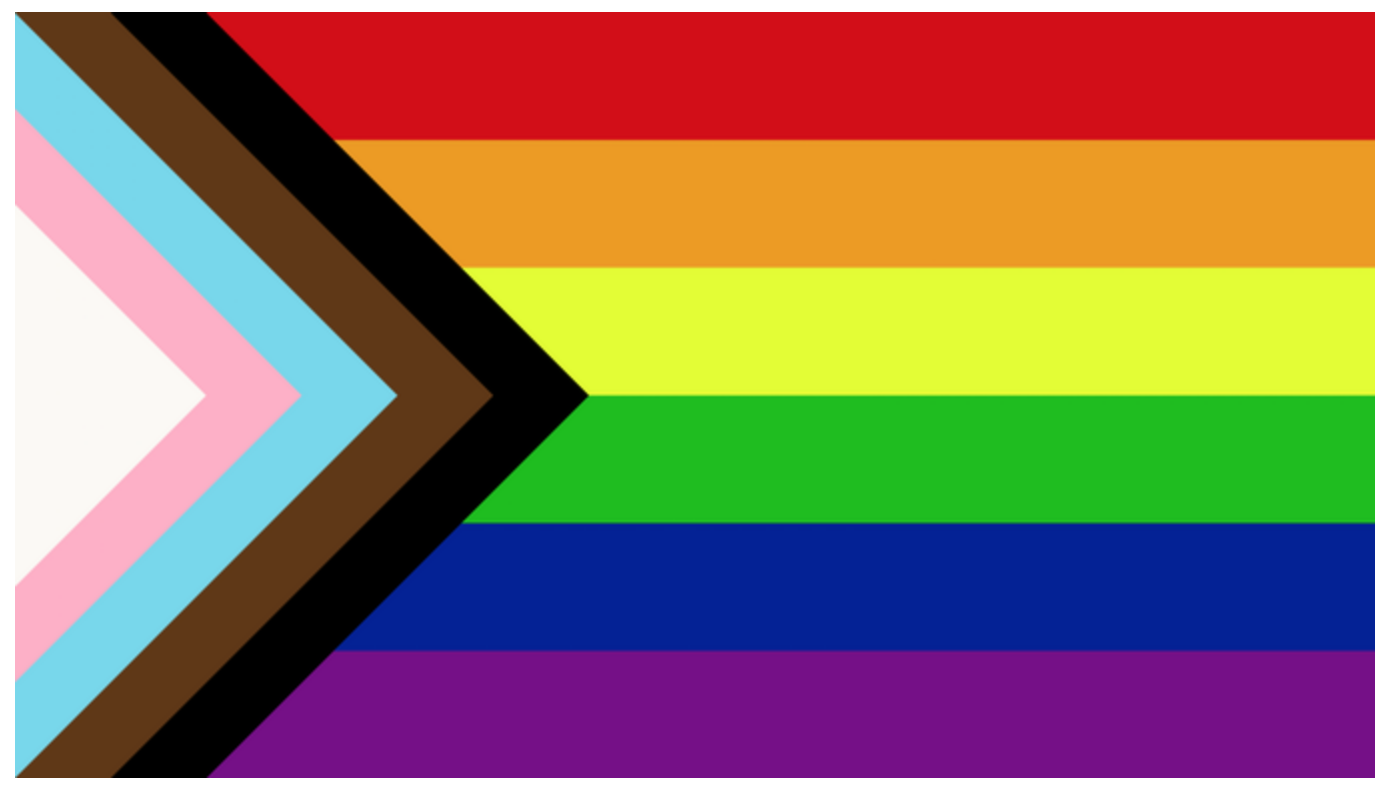 Daniel Quasar?s design for ?Progress. A PRIDE Flag Reboot.? Source.
Daniel Quasar?s design for ?Progress. A PRIDE Flag Reboot.? Source.
Xe (Quasar uses xe/xem pronouns) said the black stripe also represented, ?those living with AIDS, those no longer living, and the stigma surrounding them?.? Quasar?s design has attracted a lot of buzz and a Kickstarter campaign to mass-produce the new flag raised almost twice as much as the original $14,000 request. Quasar has since commercialized that design, selling a range of products featuring the Progress flag and licensing it to other manufacturers.
Both proposals for new pride flags are well-intended: a desire to create an inclusive visual symbol of the diverse LGBTQ+ community and raise awareness of those still marginalized within that community and the wider society. They respond to real, enduring problems and deserve to be taken seriously and considered on their merits.
Nevertheless, my initial reaction to both new flags was similar: they?re flagrantly disrespectful of an historic symbol of LGBTQ+ people, pride, and community. But on closer analysis, I also came to understand them as narrow statements of identity politics that invite the very kinds of division they claim to remedy.
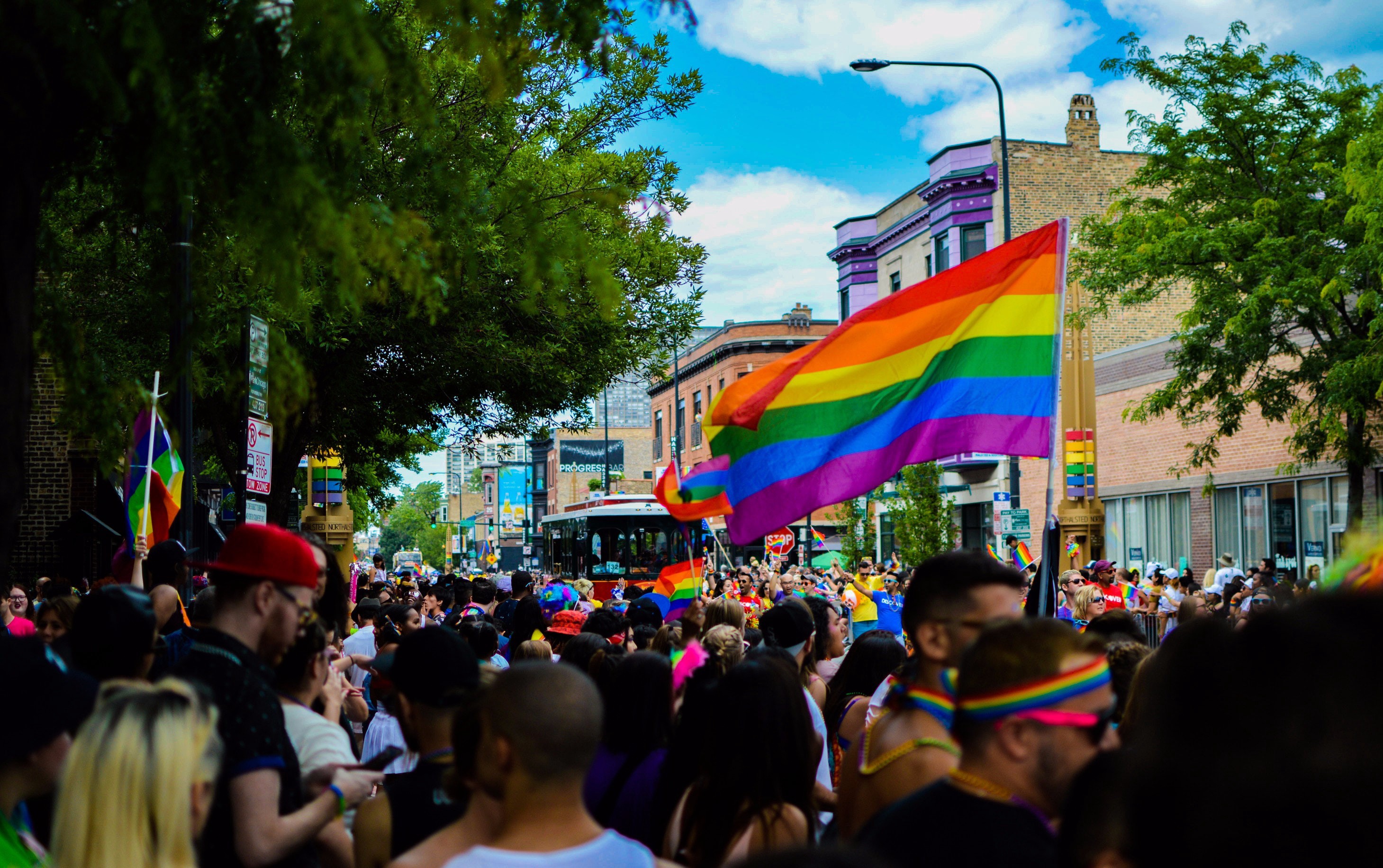 Pride flag in Pride parade, Chicago, IL (USA). Photo: Gotta Be. Courtesy: Pexels.
Pride flag in Pride parade, Chicago, IL (USA). Photo: Gotta Be. Courtesy: Pexels.
One of the beauties of the original rainbow flag was that each colored stripe represented an abstract concept, not a specific racial, ethnic, gender, or sexual identity. This feature allowed the flag to be claimed as a symbol by a wide range of people ? as it has been.
The first rainbow Pride flags were created by the decorations committee of San Francisco?s 1978 Gay Freedom Day Planning Committee. Aided by friends and volunteers, three members of that committee were central to the first flags? creation: Lynn Segerblom, James McNamara, and Gilbert Baker. Segerblom was an artist with skill dyeing fabrics; McNamara was a clothing designer with sewing skills; and Baker was a seamster and self-described drag queen who often appeared at protests and celebrations in hand-sewn dresses.
The first flags were hand-dyed and sewn from cotton muslin fabric at San Francisco?s Gay Community Center on Grove Street. There were two versions: one based on the American flag, with rainbow stripes and blue field at the ?hoist? (flagpole side) with white stars arranged in circles of eight. The other ? the one better known today ? was comprised solely of horizontal stripes in rainbow colors.
Both flags had eight stripes: hot pink, red, orange, yellow, green, turquoise, indigo, and violet. Though not original to its conception, those colors came to assigned the concepts of sex, life, healing, sun, serenity with nature, art, harmony, and spirit. The number of stripes was later reduced to six, for purely practical reasons related to the logistics of display and limits of mass production.
The origins of the rainbow design are somewhat contested. In a 2018 Los Angeles Times interview, Segerblom recalled, ?I wanted to make an American flag that was rainbow because I think it?s for everybody?My idea was just ? color. People love color. They love the rainbow.? In his 2019 memoir, Gilbert Baker claimed the idea for a rainbow design came to him from the ?swirl of color and light? he experience on the dance floor one night at the Winterland Ballroom.
Whatever its origins, the rainbow Pride flag was subsequently embraced by a wide range of LGBTQ+ people and became a global symbol of the LGBTQ+ community.
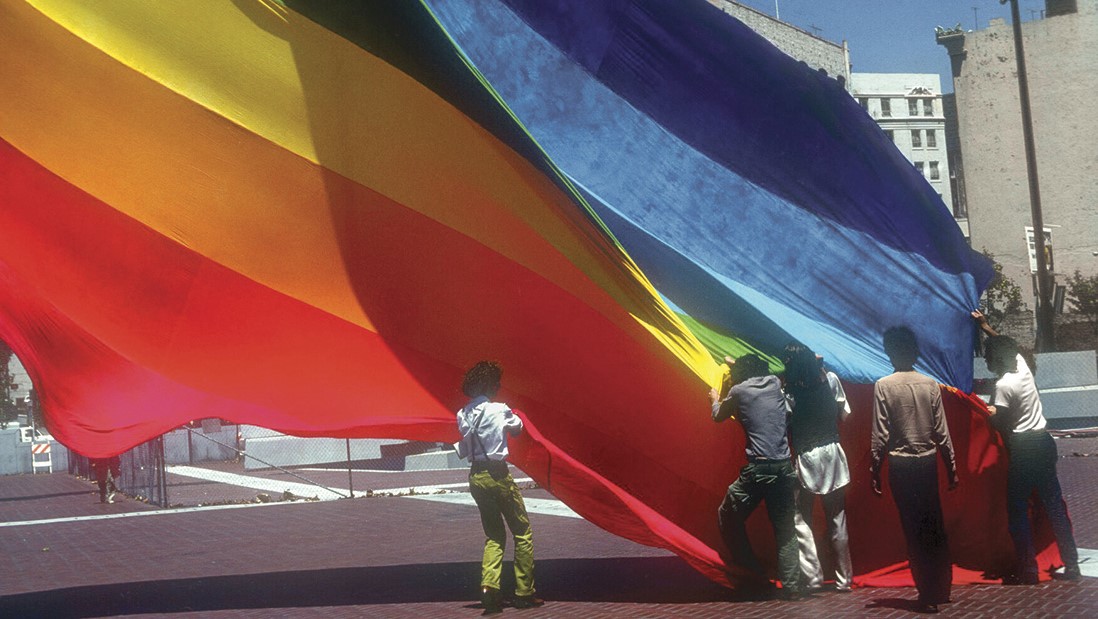
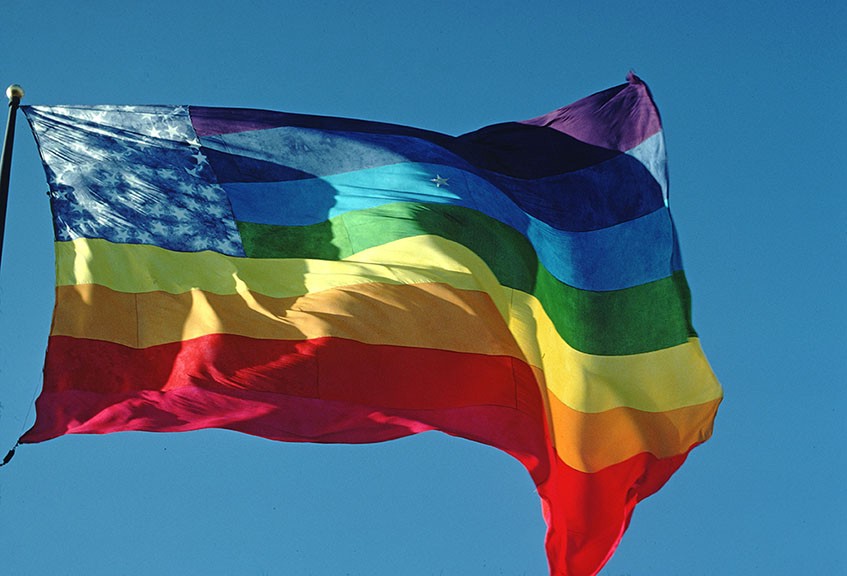 The two original rainbow flags as flown at United Nations Plaza, San Francisco, Calif. (June 25, 1978): one with stripes only (L) and one with stars and stripes (R). Note the eight stripes and that the red stripe is NOT at the top (as is considered protocol for flying the flag today). Photos: James McNamara. Source.
The two original rainbow flags as flown at United Nations Plaza, San Francisco, Calif. (June 25, 1978): one with stripes only (L) and one with stars and stripes (R). Note the eight stripes and that the red stripe is NOT at the top (as is considered protocol for flying the flag today). Photos: James McNamara. Source.
In contrast to the original, both the proposed new Pride flags include colored stripes intended to represent specific communities or identities. But these stripes are both literal and reductive, resulting in flags that are truly problematic.
On the Kickstarter page to fund the Progress flag, Quasar described the black and brown stripes added to the rainbow Pride flag as, ?representing marginalized POC communities (brown, black).? An unnamed source involved with Philadelphia?s flag stated, ?The black and brown stripes are an inclusionary way to highlight black and brown LGBTQIA members within our community.?
So, the new black and brown stripes are intended to represent black and brown LGBTQ+ people and their communities. OK. But, given the overwhelming majority of the global population has some shade of brown skin, these choices narrow the meaning and significance of the new flags to a U.S. cultural and political context. Thus, the universality of the original rainbow Pride flag is reduced to narrow, nationalist concerns. The new flags are American ? not global ? Pride flags.
More troubling than this unconscious ethnocentrism is the new flag makers? choice to represent racially- and ethnically-diverse peoples using a small handful of solid colors: black and brown. That practice recalls 18th- and 19th-century scientific racism that reduced ?the races? to the color of their skin: red, white, yellow, black, brown. That convention is the origin of racist terms like ?redskins? and ?yellow hordes? still used today.
This typology treats ?race? as grounded in immutable biological traits ? in this case, skin color ? rather than an invention of human society with a history and a purpose. In other words, it implies that race is biologically determined rather than socially constructed. And that way of thinking has never lead anywhere good. Plus, it ?flattens? individual and sub-cultural differences making it easier to stereotype and caricature diverse groups of people.
By adding stripes intended to represent Black and Brown Americans, the abstract, universal symbolism of the rainbow Pride flag gets reduced to something narrow and particular, and unintentionally racist and ethnocentric.
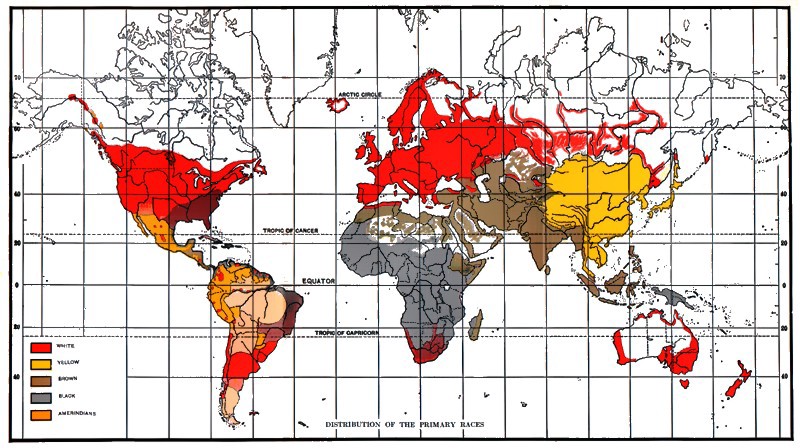 Lothrop Stoddard?s ?Distribution of the primary races? from Lothrop Stoddard, The Rising Tide of Color Against White World-Supremacy (New York: Charles Scribner?s Sons, 1920). Image: Wikimedia Commons.
Lothrop Stoddard?s ?Distribution of the primary races? from Lothrop Stoddard, The Rising Tide of Color Against White World-Supremacy (New York: Charles Scribner?s Sons, 1920). Image: Wikimedia Commons.
Perhaps more problematic is the use of the color black on Quasar?s flag to represent ?those living with AIDS, those no longer living, and the stigma surrounding them.?
Since 1991, the color red has been associated with HIV/AIDS activism. In that year, a New York City artists collective envisioned wearing a red ribbon as a way to create awareness of HIV/AIDS and show support and compassion for those living with the disease. Yellow ribbons had been used to support soldiers fighting in the Gulf War and the color red was chosen because it was bold and associated with concepts like ?passion, heart, and love.?
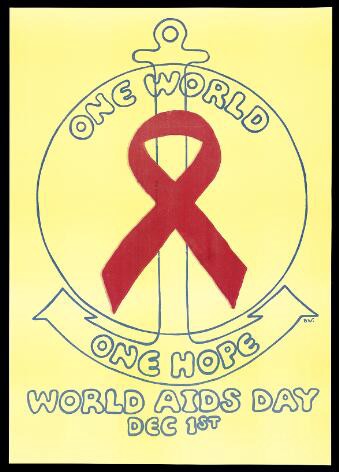 World AIDS Day Poster by ?BW.? Image courtesy Wellcome Library no. 666523i.
World AIDS Day Poster by ?BW.? Image courtesy Wellcome Library no. 666523i.
The red ribbon was also intended to counteract stigma surrounding HIV/AIDS and those living with (and dying from) the disease. It was rapidly embraced as the symbol of HIV/AIDS support and awareness.
By contrast, the color black is associated in Western contexts with death, evil, and mourning. Of course, these meanings vary historically and cross-culturally, which can be a problem with any color chosen as to be a symbol.
But the choice to represent those living with HIV/AIDS through the color black is, at least, peculiar and, at worst, offensive. It bespeaks an ignorance of our community?s history and a lack of respect for what HIV/AIDS activists have accomplished.
The white, pink, and blue stripes (in Quasar?s proposed new flag) are borrowed from the original Transgender Pride flag created by Monica Helms. In that flag, the pink stripe was intended to represent ?girls,? the blue for ?boys,? and the white for intersex or transitioning people, or those with a neutral or undefined gender.
That design reifies the gender binary in ways that seem quaint in light of today?s more sophisticated thinking about biological sex, gender identity. gender presentation, gender expression, and gender transitioning ? concepts often originated and promulgated by gender expansive people themselves. ?Transgender? is now considered an umbrella concept that includes gender non-binary, genderqueer, and agender people, all of whom challenge a binary model of gender. Not all those who might be gathered under the transgender ?umbrella? feel the Transgender Pride Flag represents their experience with gender.
Moreover, the inclusion of Transgender Pride Flag?s colors in the new Progress flag represents further ethnocentrism. Pastel pink and blue aren?t colors used globally to represent baby girls or boys, or masculinity or femininity. Nor have they had that association in the United States for much more than 100 hundred years. Until the early-twentieth century, small children (of whatever sex) wore white dresses and pink was considered an appropriate, ?masculine? color for boys until the 1940s.
Adopting the Transgender Pride flag?s colors (in any new Pride flag) would seem to reproduce its problems, rather than critically engage or remedy them. How is this ?progress??
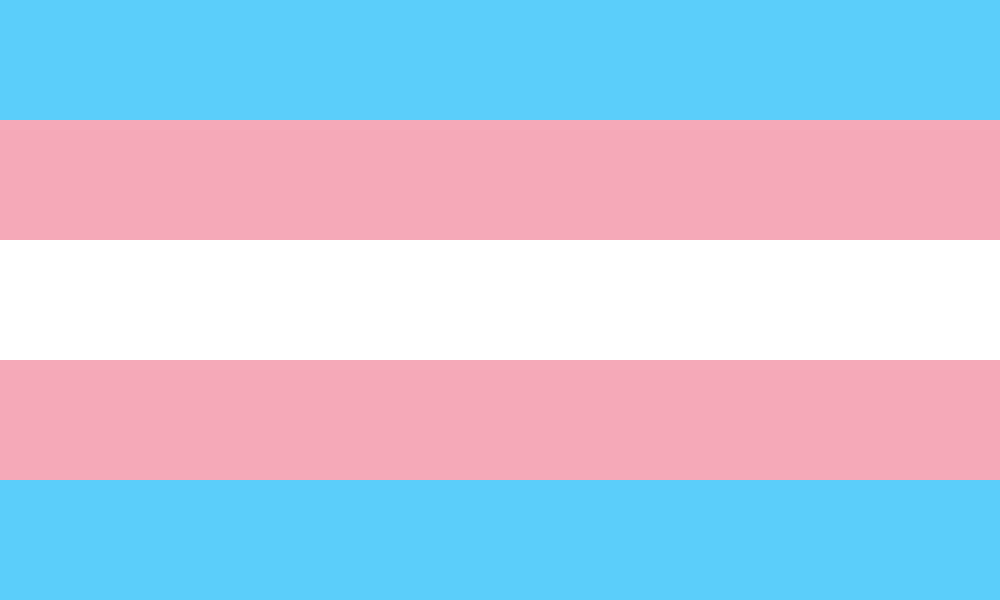 Transgender Pride Flag. Source: Wikimedia Commons.
Transgender Pride Flag. Source: Wikimedia Commons.
The addition of new stripes and colors also begs the question: why these particular identities but not others customarily gathered under the LGBTQ+ umbrella?
Are we to now interpret the red and yellow stripes of the original rainbow Pride flags as representing indigenous and Asian LGBTQ+ Americans? I suppose White LGBTQ+ people could be considered as implicitly present, since a rainbow is produced by refracting white light through glass, crystal, or moisture-laden air.
And where are the colors and stripes for asexuals, bisexuals, pansexuals, polyamorous, BDSM/kinksters, leatherfolk, daddies, boys, pups, furries, agenders, aromantics, demigenders, demisexuals, Two Spirits, queers, genderqueers, gender fluid and gender non-binary folx, bigenders, neutrois, bois, aggressives, bears, otters, wolves, etc.?
Why have they been left out of a design that?s supposedly intended to be more ?inclusionary??
These are rhetorical questions that highlight a fundamental problem with the new flags: the particularization of a universal symbol through the addition of elements representing specific identities invariably leaves someone, or some community, out. No matter how well-intended, an ?inclusionary? gesture can produce exclusionary results.
If the endless controversy over the exact letters (and their meaning) in the LGBTQQIAAPP+ initialism is any indication, it will be about two seconds before one or more of the groups excluded from the new identity-based pride flags proposes revisions to specifically include them? (I?ve already seen calls for inclusion of the colors of the Bisexual Pride Flag.)
And a once-unifying symbol will be endlessly fractured, subdivided, and partitioned until it looks like a patchwork quilt, devoid of any unifying power.
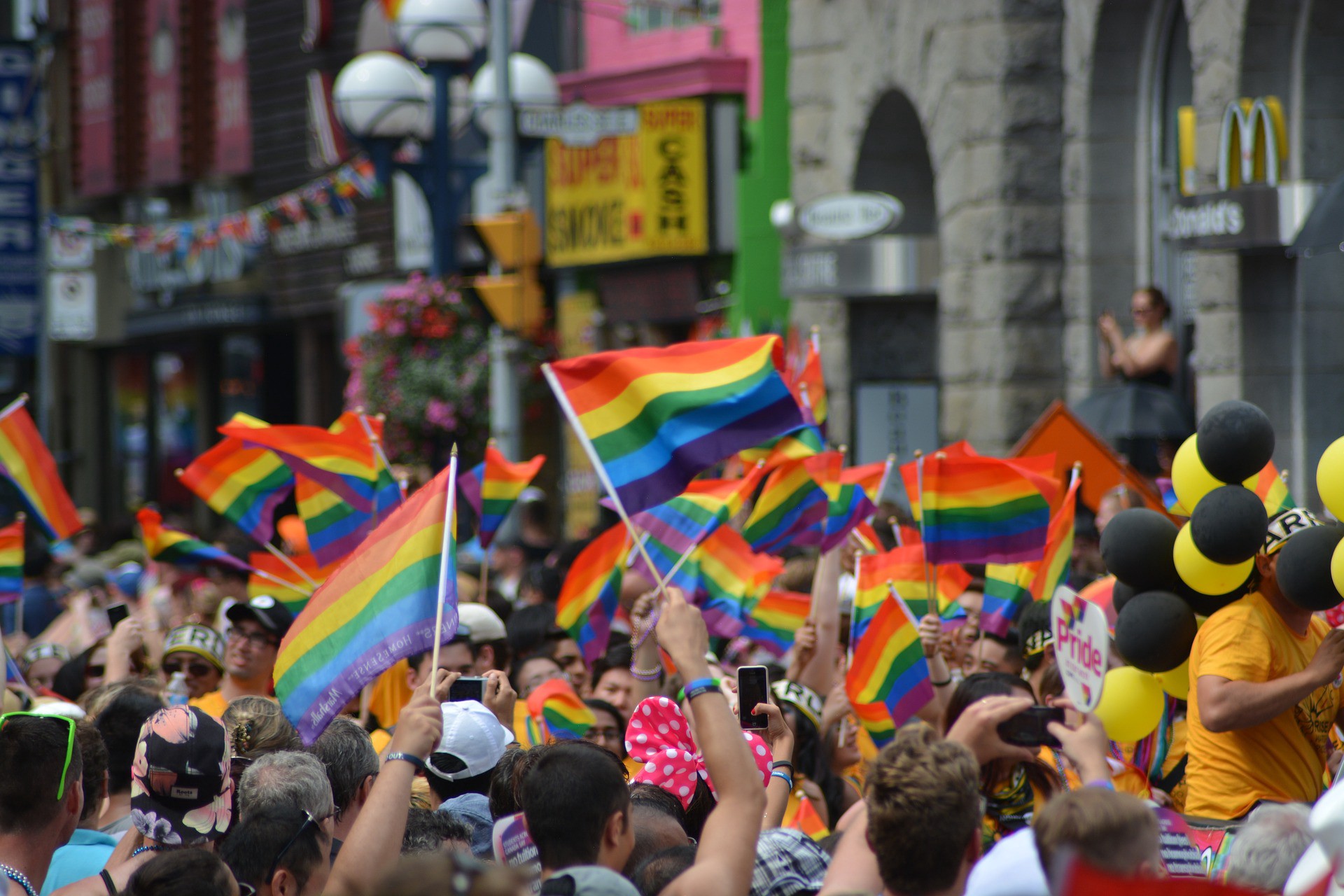 Photo: naeimasgary | CC0 Public Domain license. Source: Pixabay.
Photo: naeimasgary | CC0 Public Domain license. Source: Pixabay.
The original rainbow Pride flags were first flown over United Nations Plaza, near the terminus of San Francisco?s 1978 Gay Freedom Day Parade. It was the same year Harvey Milk was elected to the San Francisco Board of Supervisors. It was a year of hope, a word Milk used often in his speeches, and the rainbow flags seemed to capture that spirit.
Since then, the rainbow Pride flag has been recognized by the International Congress of Flag Makers and, in 2015, was accessioned into the design collections of the Museum of Modern Art (New York). Its design has been replicated across innumerable other visual and material objects ? coffee cups, hats, Christmas tree ornaments, t-shirts, postage stamps, etc.
It forms the conceptual basis for the design of the Bisexual Pride, Transgender Pride, Bear Pride, Intersex Pride, Leather Pride, Pansexual Pride, Asexual Pride, Lipstick Lesbian Pride, Genderfluid Pride, and Genderqueer Pride flags (and probably many others).
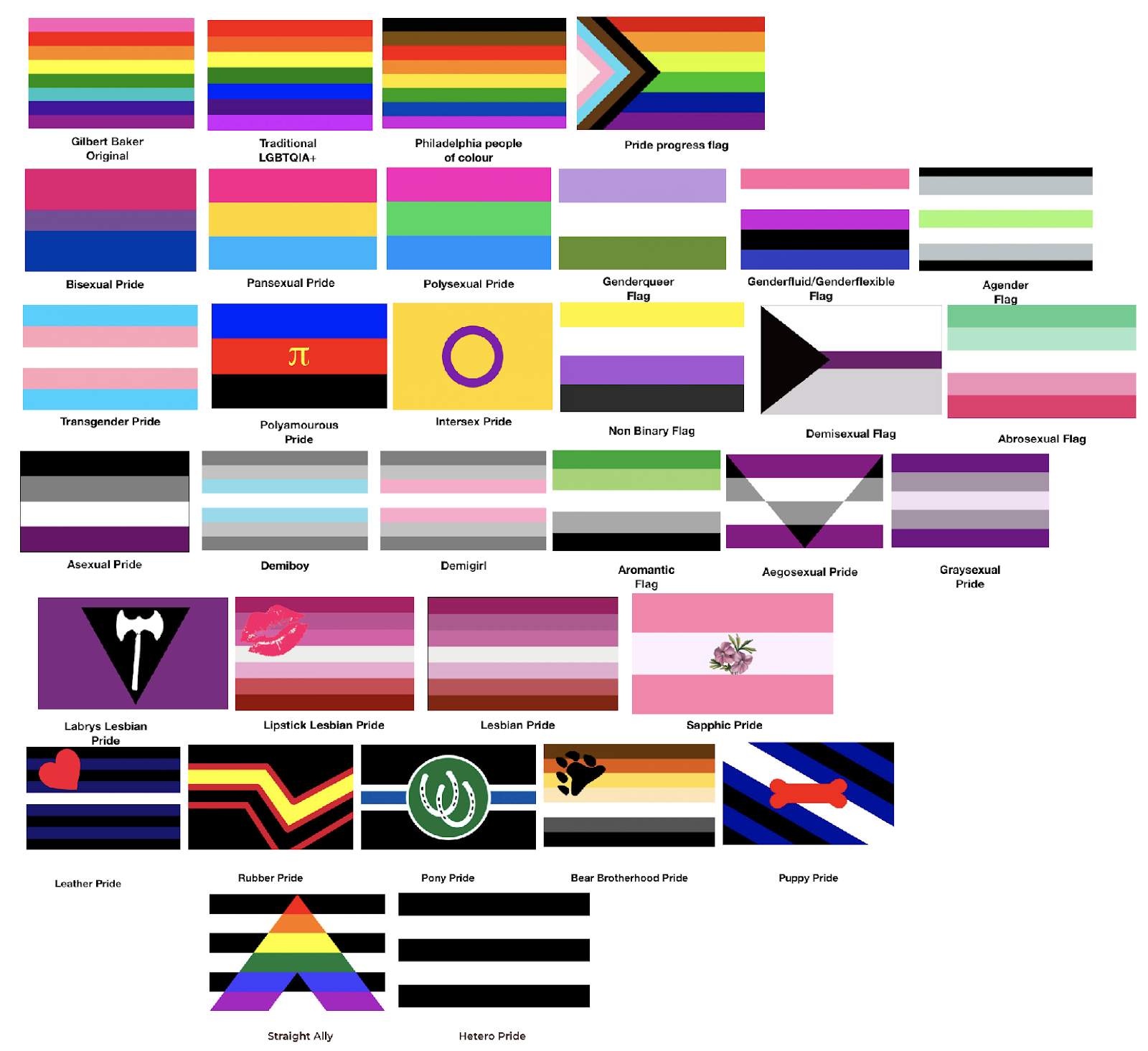 All the Pride flags. Note: Gilbert Baker was not the sole creator the original rainbow Pride flag and those flags were flown pink stripe down, unlike shown here. Source.
All the Pride flags. Note: Gilbert Baker was not the sole creator the original rainbow Pride flag and those flags were flown pink stripe down, unlike shown here. Source.
And it has become an instantly recognizable visual and material element of many, many people?s individual and collective LGBTQ+ identities for over 40 years. As Terry Beswick, executive director of the GLBT Historical Society in San Francisco, said in 2018,
The rainbow flag is an almost universally recognized symbol of gay liberation and all things LGBTQ around the world. I would guess that billions of people know that this flag stands for gay pride.
Yes, the community that embraced the rainbow Pride flag is not perfect. (What community is?) And, yes, racism and transphobia have been and still are shameful parts of the LGBTQ+ community (as they are in the wider society). I do not deny this.
We still have work to do!
But I?m hard-pressed to see how the original rainbow Pride Flag symbolizes or perpetuates racism or transphobia. Or intentionally (or even unintentionally) excludes anyone on the basis of race, ethnicity, gender identity, or gender expression/presentation.
(And, if it does, why has its design been retained in any new flags?)
On the contrary, the rainbow Pride flag has been intuitively understood and embraced worldwide as a metaphor for both the diversity and unity of LGBTQ+ people. Despite our individual or ?tribal? differences, we share certain things, including a desire to live open, authentic lives free from discrimination, stigma, and violence.
In light of its global and historic significance, perhaps we might want to pause before hiring an advertising agency to ?revamp? the rainbow Pride flag, or designing a ?reboot? that?s accidentally racist, ethnocentric, transphobic, and insulting to people living with HIV/AIDS.
Michael J. Murphy, PhD, is Associate Professor of Gender & Sexuality Studies at the University of Illinois Springfield. He is the author of many book chapters, and encyclopedia and journal articles. Most recently, he edited Living Out Loud: An Introduction to LGBTQ History, Society, and Culture (New York: Routledge, 2019).
